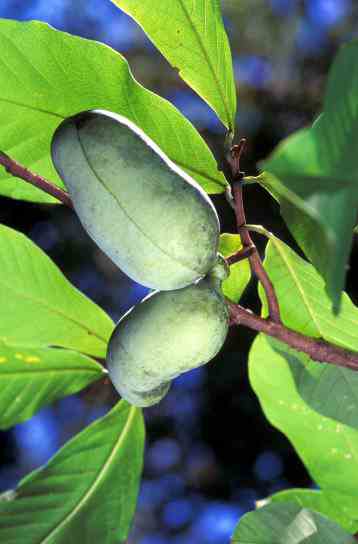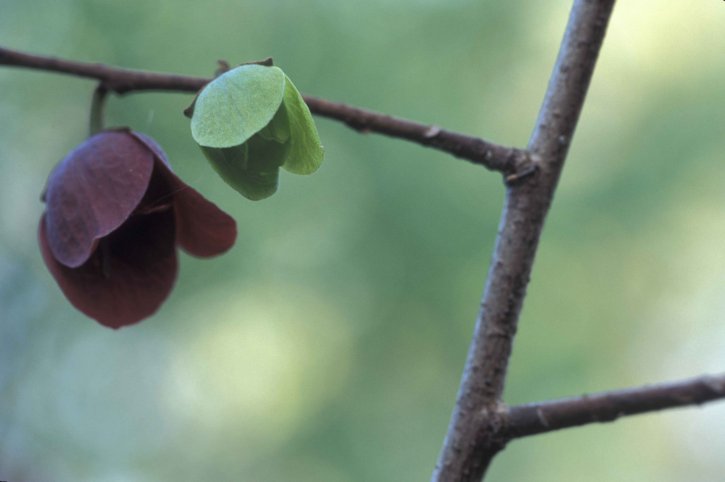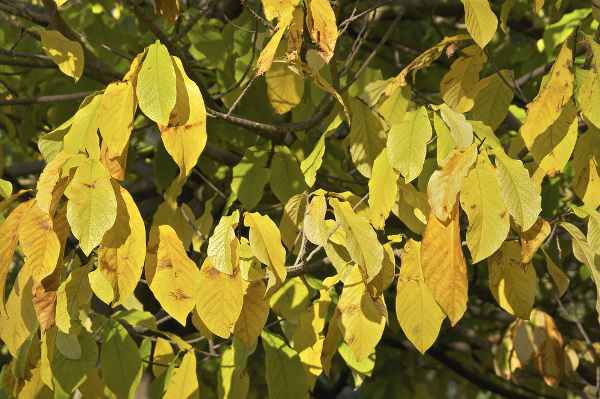PawPaw Fruit Wild Edible Food



PawPaw (Asimina triloba), is a small understory tree that grows in North America from New York to Southeast Texas. The pawpaw grows under the canopy of hardwood forest in well-drained, fertile soils. The leaves are large and fruits are edible and downright delicious. The pawpaw fruit is actually the largest edible fruit in the USA.
PawPaw trees go by many common names, usually something like wild banana or Kentucky Banana etc. The tree can be identified readily using just a few characteristics. The leaves are large like a magnolia tree. The leaves can be 10 inches long (25.4 cm) and are clustered near the end of the branches. The trunk is rarely more than 12 inches (30.4 cm) in diameter. The leaves while large like a Magnolia are not as stiff as the waxy leaves of the various magnolia species!
Like a Magnolia the leaves are entire margins. They are obovate-lanceolate leaves, meaning they are fairly long and then. Widest near the end of the leaf, not the middle like a magnolia leaf.
The PawPaw produces flowers in early spring at the same time as or slightly before the new leaves appear.
The fruit, which is what we are interested in, are large, yellowish-green to brown and up to 6 inches long and half as wide. They have several brownish black seeds. The fruits mature in either September or October.
The fruits when ripe do not last long as they are favored by most animals such as squirrels etc. So if you are not quick you will miss out.
The fruits are initially green so keep an eye out for them and when they start to turn yellow or brown and the branches supporting them begin to bend it is time to enjoy some luxury... today or after the modern world comes crashing down. Fresh fruits of the pawpaw are usually eaten raw and can only be kept for a day are two without refrigeration. The pawpaw fruit pulp is often used in dessert recipes, blended into ice cream or as you might have guessed for making juice. Methods of preservation include dehydration, production of jams or jellies, and pressure canning.
Now you are not likely to find this food in large numbers and it isn't super common like acorns. So why bother including it here? Because this website is not just about surviving but surviving well and improving your standard of living above just barely getting by. The pawpaw fruit can bring a mango-like taste back to your life if you just know to keep an eye peeled for it!
This fruit tree has just recently been cultivated. And if you locate this tree it is one that you will want to preserve. Do not do something stupid and cut it down for firewood or furniture! Protect it and try to cultivate and multiply it into your own orchard. In a rebuilding situation where you can't import tropical fruits the PawPaw fruit will make a super excellent replacement.
Cultivation:
Although the PawPaw is shade-tolerant they do much better in forests that experience disturbances. So although an understory tree they do not thrive in complete shade. Pawpaws spread locally primarily by root suckers; sexual reproduction by seed does also occur, but at a fairly low rate. So knowing the conditions that they require and how to increase their numbers is not as simple as with most other tree species.
It should be noted that the PawPaw flowers smell like rotting flesh. So don't plant them around your house in great numbers. PawPaws actually use flies instead of bees for pollination. haha
Lack of successful pollination (no fruit) is a fairly common occurrence with pawpaws. And cross-pollination of at least two different genetic varieties is believed by some to be necessary or at least is more productive.
PawPaws are native and have few pests so they can be easily grown without the use of pesticides that will not be available after the SHTF.
Transplanting PawPaws is not often successful. Growing them from seed will be the best method for propagation.

